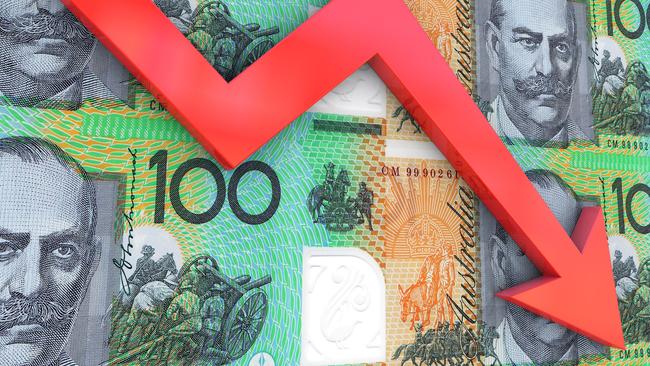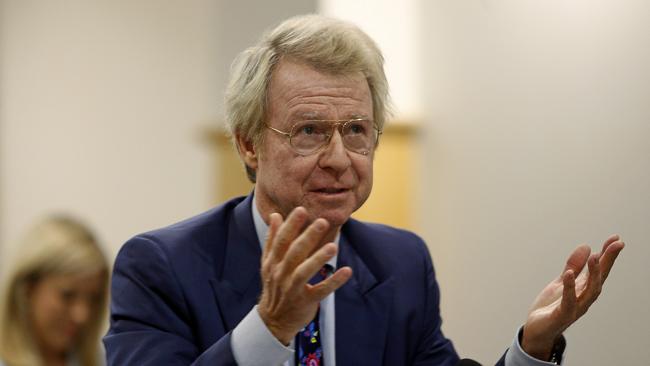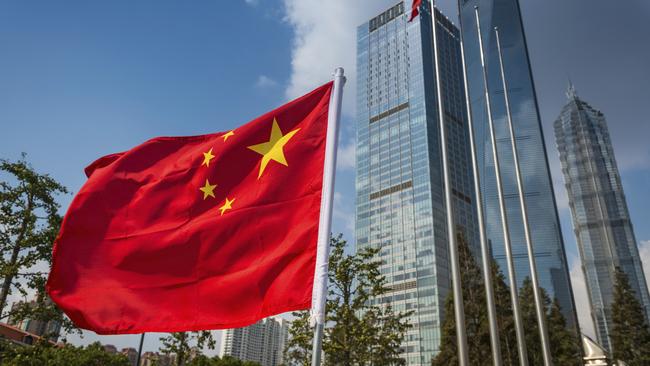Aussie dollar slumps to near five-year low against US dollar
Weakness in China’s economy and the looming threat of a trade war ignited by Donald Trump have forced the Australian dollar to its lowest level since April 2020.

The Australian dollar fell to a near five-year low on Thursday as ongoing weakness in China’s economy and the looming threat of a Donald Trump-ignited trade war heighten the risk of a fresh inflation battle in 2025.
The weaker dollar is not only bad news for travellers and those buying products from overseas, but markets warn that it could force the Reserve Bank of Australia to delay interest rates cuts if it results in an uplift to import inflation.
The currency briefly hit US61.84c on Thursday morning before climbing to US62.18c at the local close. It was the lowest level since US61.85c at the height of the initial Covid-19 wave on April 7, 2020.
The Aussie has now lost 9 per cent against the US dollar in the past year, including 7 per cent since Mr Trump’s election victory on November 5. The Aussie dollar was also down elsewhere, buying 60 euro cents on Thursday and 49 British pence, pushing total losses for the latter in the past months over 3 per cent.
The depreciation has been fuelled by offshore factors, including China’s sluggish economy and Mr Trump’s election victory, which is expected to lead to stronger US growth, higher inflation and, subsequently, higher interest rates, all of which contribute to a stronger US dollar.

AMP chief economist Shane Oliver said if the trend continued, it could have an impact on the RBA’s next rate decision.
“Imports account for between 10 to 15 per cent of the (consumer price index), so it can have a significant impact,” Dr Oliver said.
“It means every fall in the Aussie dollar by 10 per cent adds 0.1 to 0.15 per cent to inflation.
“If it keeps falling from here – say 20 per cent since the start of 2024 – it could have an impact on the RBA’s decision.”
A weaker Australian dollar increases the cost of imported goods, which can contribute to inflation. Although many importers hedge their currency exposure, the price increases still flow through to consumers with a lag of six months to a year. On the reverse side of the coin, a weaker Australian dollar is good news for exporters who become more competitive.
Mastercard chief economist David Mann told The Australian this week that risk caused by import inflation had occurred elsewhere, pointing to the impact it has had on the Japanese economy, which has seen near double-digit inflation caused by its weak currency in recent months.
“(Import inflation) could be one of the factors that could be why you get a slight delay in the rate-cutting cycle, especially in the context of the US, also signalling a much slower cutting cycle than they had previously been communicating with markets,” he said.

This latest downward trend in the dollar has been aided by Chinese President Xi’s New Year address amid ongoing sluggishness in the world’s second largest economy, according to Capital.com senior financial market analyst Kyle Rodda.
“The AUD/USD remains primarily a proxy for China’s economic malaise and the absence of sufficient policy support to jump-start economic activity. A firmer US dollar also remains a significant part of the equation due to the US economy’s world-beating performance and the expected impact of Trump tax cuts and tariffs on growth, inflation and monetary policy,” he said.
IG market analyst Tony Sycamore noted that China has already allowed its currency to depreciate to mitigate the impact of looming US tariffs, which has further weighed on the Australian dollar. He added that every 2-3 per cent decline in the yuan weakens the Australian dollar by 3 to 5 per cent.
“The fate of the Australian dollar against the US dollar in 2025 will largely depend on developments following Trump’s inauguration on January 20,” Mr Sycamore said.
“There will be particular interest in which of Trump’s policies are implemented, their timelines, and how they compare to his pre-election promises.”
In the lead-up to the US election, Mr Trump hinted at raising tariffs on Chinese imports to 60 per cent or higher if he was re-elected. Currently, approximately 60 per cent of imports from China are already subject to tariffs, averaging around 17 per cent.
“The market consensus is that Trump’s tariffs on China may rise to around 40 per cent. If the actual tariffs are lower than this, it should provide some relief for our currency; however, any increase beyond 40 per cent is likely to weigh heavily,” Mr Sycamore said.
Additional reporting: Cameron Micallef






To join the conversation, please log in. Don't have an account? Register
Join the conversation, you are commenting as Logout